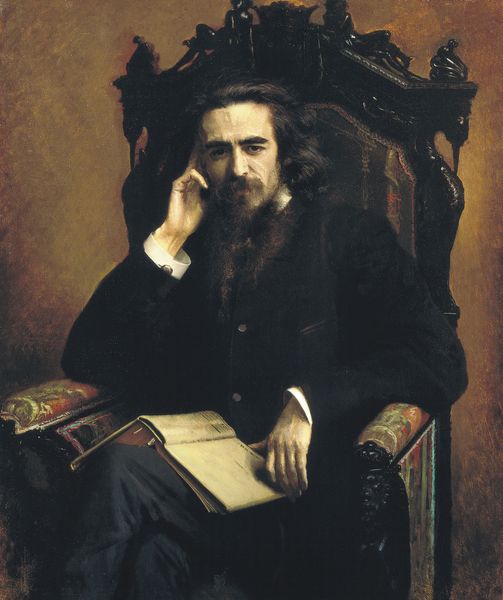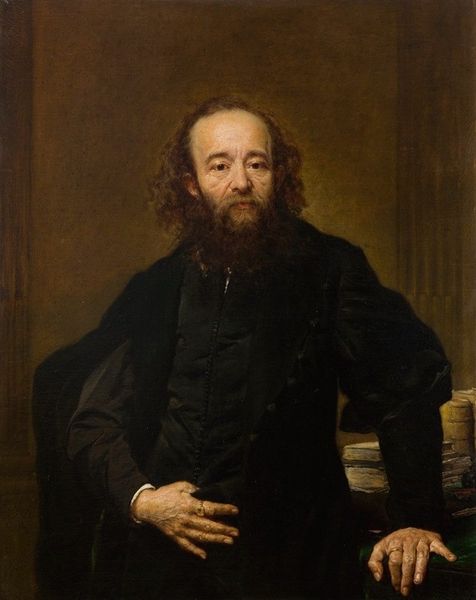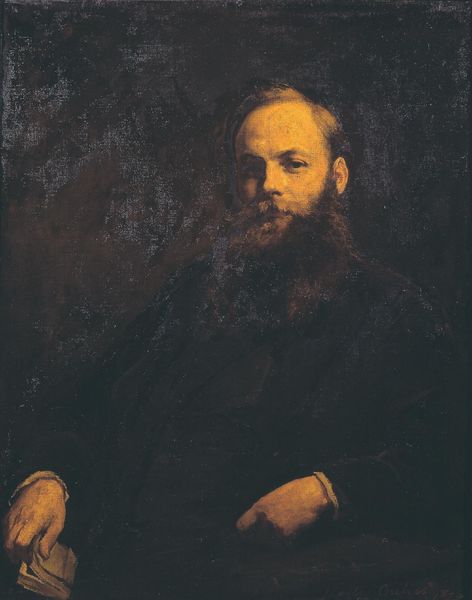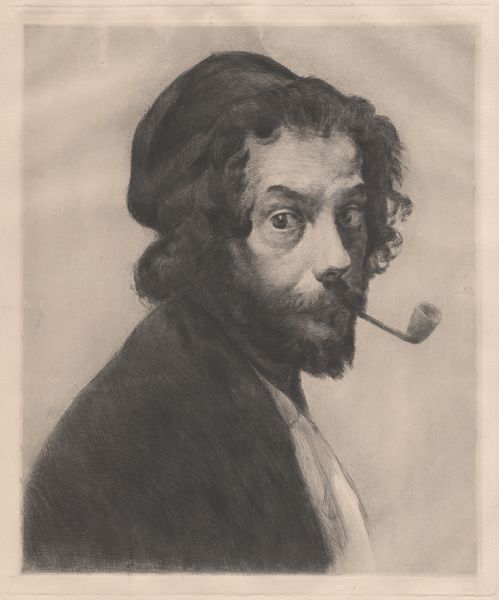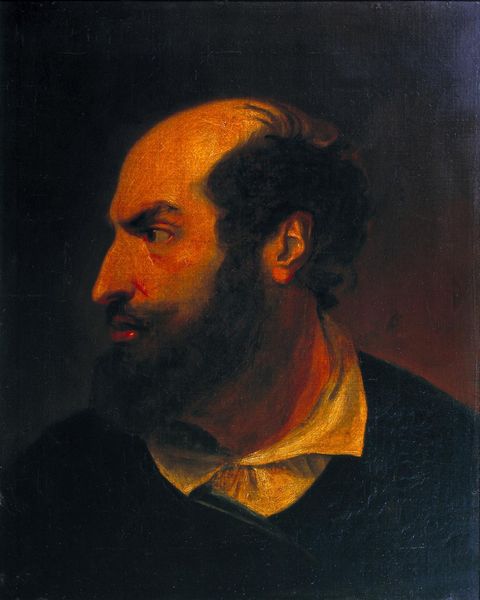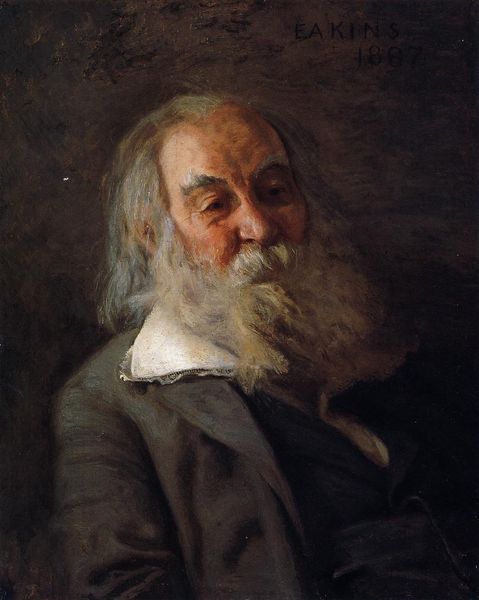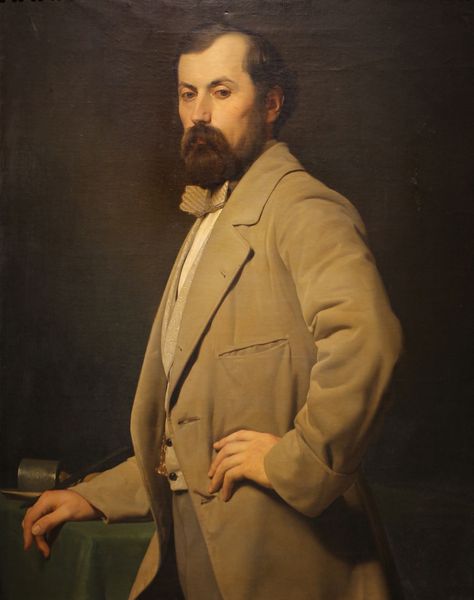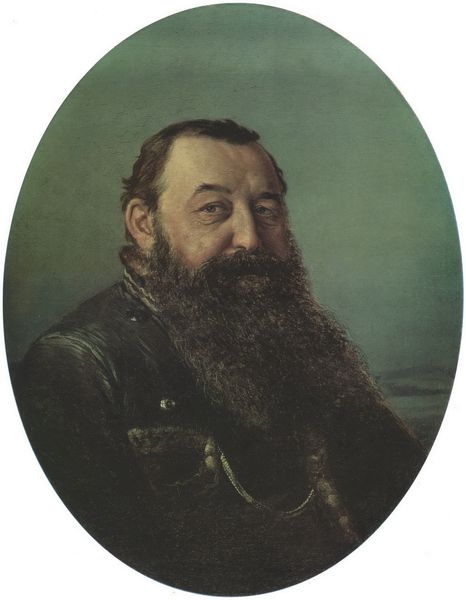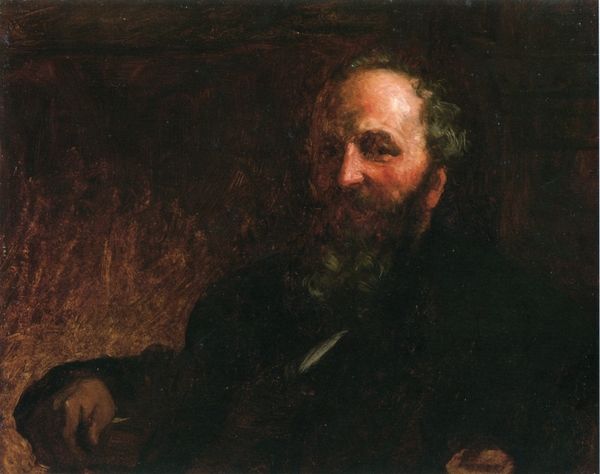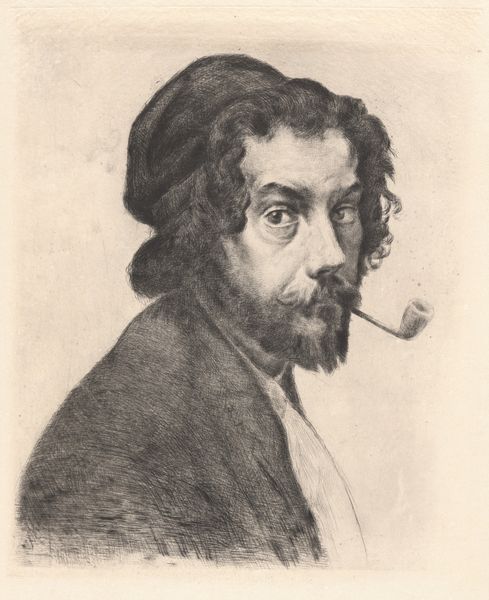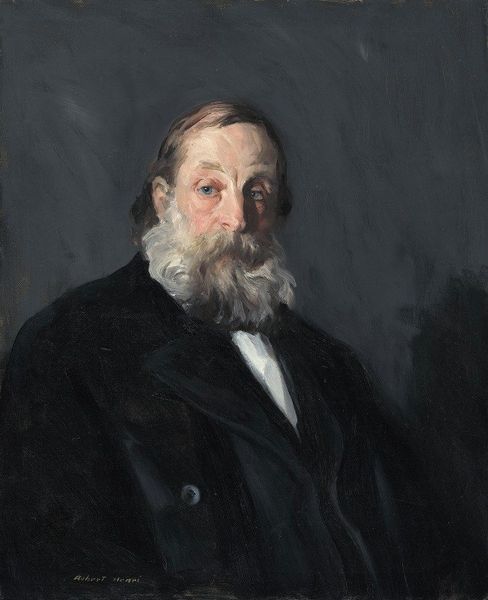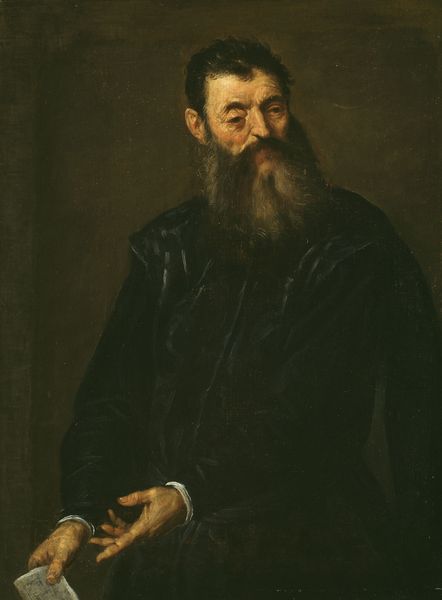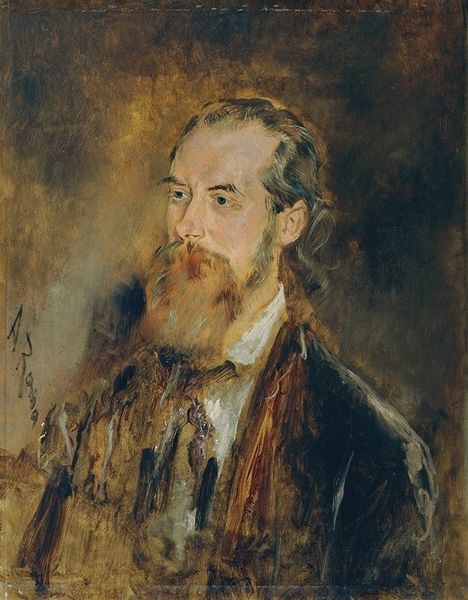
Copyright: Public domain
Curator: Here we see Ilya Repin's oil-on-canvas work from 1880, "Portrait of the Artist Nikolay Gay." It currently resides in the Tretyakov Gallery in Moscow. Editor: The intensity of that gaze hits you immediately. The black background throws the artist’s face into sharp relief, highlighting the weariness and perhaps a hint of defiance in his eyes. Curator: Indeed. This piece holds a crucial position in the development of Russian realism, capturing the intellectual and artistic climate of the time. Repin, of course, was a key figure in the Peredvizhniki movement, a group deeply invested in portraying Russian life accurately. Editor: Gay’s own biography adds layers to the reading of this work. As a religious philosopher and a reformer, Gay experienced constant social isolation which appears evident in his eyes; Repin paints a portrait of an alienated mind and a fractured soul, which for me is the genius of the picture. Curator: Absolutely, and the choice of portraying Gay against such a stark background reinforces his position as a solitary figure, dedicated to his convictions, his black shirt may also relate to his ascetic existence in the last decades of his life. Editor: You also sense a resistance to idealization. Repin doesn't shy away from portraying Gay's age, his weariness. In that sense, it aligns with the Realist agenda of portraying truth, however unglamorous it may be. What’s really remarkable here is the way Repin captures the inner turmoil, the depth of feeling with such minimal brushstrokes and subtle lighting. Curator: The use of dramatic chiaroscuro—the interplay of light and shadow—serves to enhance the emotional depth and it also reveals a lot of the influences in Gay's life and art, for instance his strong appreciation of Rembrandt. Editor: Well, for me it is like seeing history staring back at us, forcing us to confront uncomfortable truths about art and society. It serves as a mirror, inviting us to consider what we choose to see and how our own biases shape our perception of the world and it speaks volumes, even today. Curator: I think it succeeds in encapsulating not just an individual but also the tensions of a changing society. Editor: Ultimately, it reminds me of the enduring power of portraiture to challenge, provoke, and connect us to the human experience.
Comments
No comments
Be the first to comment and join the conversation on the ultimate creative platform.
